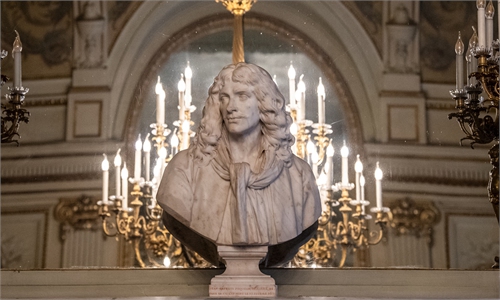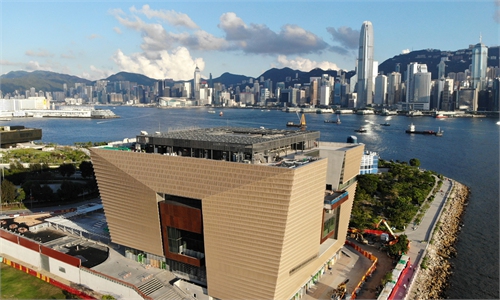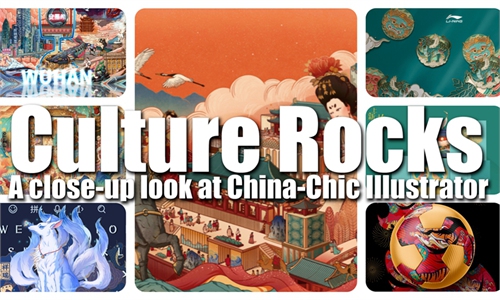ARTS / CULTURE & LEISURE
Popularity of Chinese aesthetics shows young artists’ independence and cultural pride: designer Wu Yao
Rising confidence
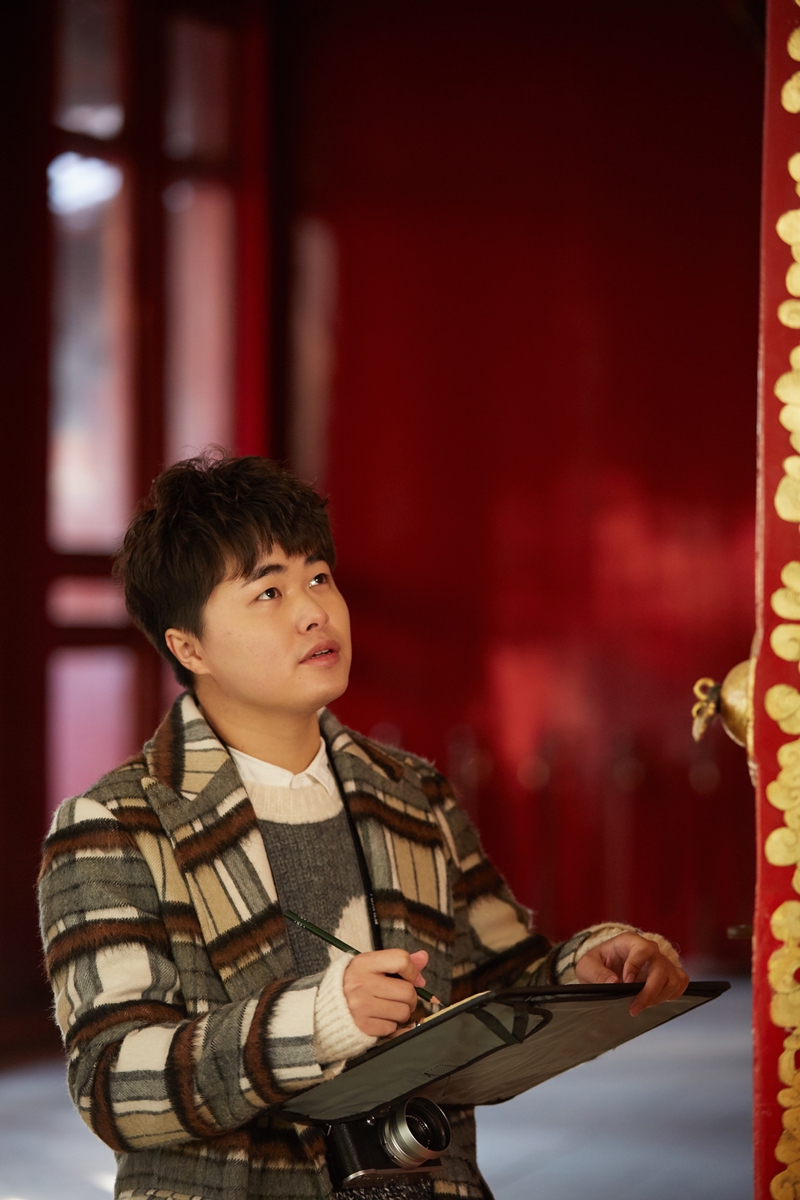
Wu Yao Photo: Courtesy of Wu Yao
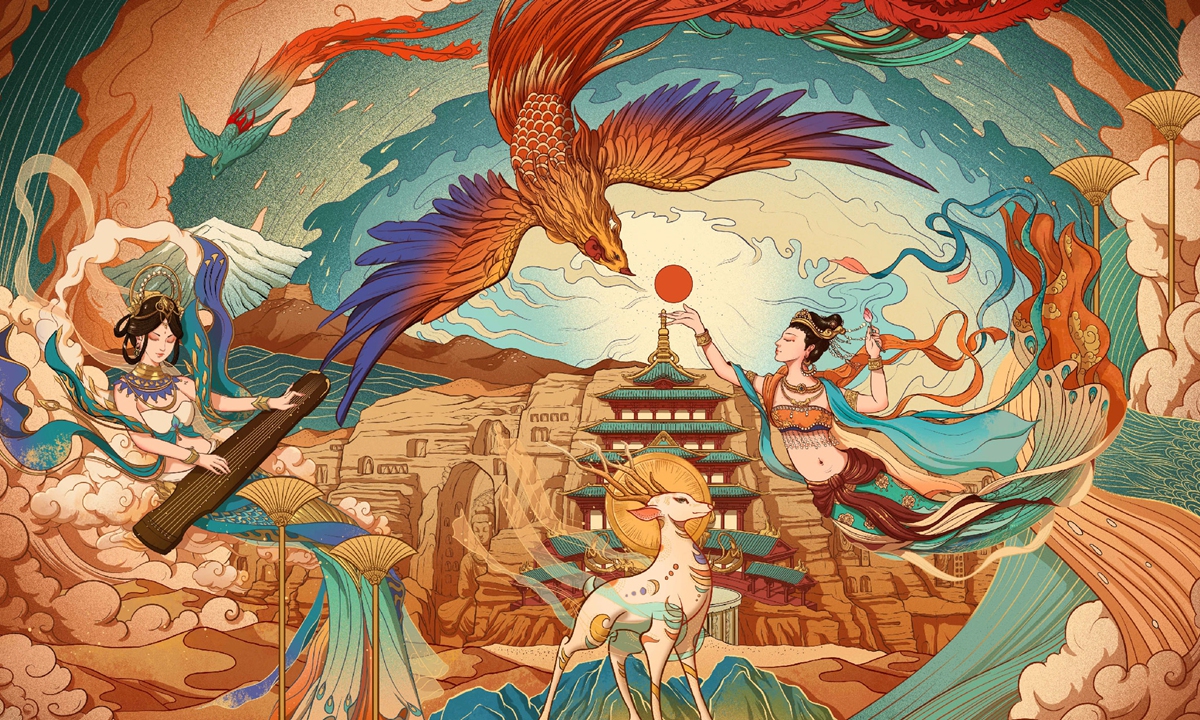
Wu Yao's design for the game Jade Dynasty, which takes the world-famous Mogao Grottoes in Northwest China's Gansu Province as its theme. Photo: Courtesy of Wu Yao
Since the beginning of the China chic fever roughly two years ago, Chinese elements have become increasingly popular among young illustrators and designers. From Chinese YouTuber Li Ziqi to the design of cosmetics to furniture, Chinese aesthetics can be found everywhere. Wu Yao, a well-known Chinese illustrator and designer, told the Global Times in an exclusive interview that the emergence of China chic is in fitting with the times and provides ordinary consumers, both Chinese and foreign, with a channel and opportunity to learn about Chinese tradition.Full of vitality
In 2018, Chinese sports brand Li-Ning made a stunning appearance at New York Fashion Week, which marked the start of its exploration into the world of fashion. Over the following years, the brand not only attracted countless fans at home, but also gained attention abroad. On the day of the New York show, Li-Ning's WeChat index skyrocketed 700 percent. Three days after the show, tweets about the brand's appearance at New York Fashion Week had been posted more than 15 million times.
Wu, a Li-Ning collaborator, told the Global Times that the fundamental reason for the popularity of China chic comes from the all-embracing nature of Chinese art. For instance, Chinese paintings cover an extensive range of subjects and styles.
"There are a lot of French artists or fashion masters who have a lot of Chinese collections at home. For example, Valentino Garavani, the founder of an Italian luxury fashion company, is a crazy supporter and fan of Chinese aesthetics," Wu noted.
"The Chinese aesthetic is always full of vitality."
"I used to love Western oil paintings because the realistic style interested me, but one day I was assigned to do my graduation work on the Wudang Mountains. At first, I thought it would just be a small mountain and was so confident that I could complete it quickly. However, when I arrived, I was shocked to find that the mountains were too grand to imagine," Wu said.
"There are a lot of murals, carved beams and painted buildings on the mountain, and the architectural style also opened my eyes. Later, I found out there are numerous subjects in Chinese culture that can be used in my creative work. Chinese aesthetics is no longer bound to just ink paintings, there also have many more layers that are unmatched by Western art forms."
Wu was inspired by his research into traditional Chinese culture. He said that visiting more museums and historical sites, gaining more knowledge and seeing more cultural relics was very helpful for coming up with ideas.
"You can even look at some overseas Chinese collections from the 17th, 18th and 19th centuries for inspiration. Europeans at that time loved Chinese art every much," he noted.
Addressing the popularity of Chinese elements, Wu pointed out that illustration, design and other forms of art are the means by which each country expresses its voice.
"In recent years, China chic products have been developing very well and designers are very enthusiastic about the aesthetic. I think this is because commodity culture is becoming more and more active. People are getting rich, but they don't want to just feed their bellies, they also want spiritual fulfillment," Wu said.
Deeper understanding
Some experts say that Chinese millennials are a generation who grew up with the revival of Chinese culture. They are confident in their own culture, pay more attention to quality, innovation, personal experience and are willing to experience multiculturalism, therefore a sense of identity and confidence in traditional culture began to emerge among them.
"Whether they are painting, illustration or cultural and creative products, I am excited about the emergence of the concept of China chic. Because its appearance fits the times and can provide consumers and every ordinary person with a channel and opportunity to understand Chinese tradition," Wu said.
At the same time, to cater to the Chinese market, a lot of foreign brands introduced products with Chinese elements such as "tiger bags" or clothing printed with flowers popular in Northeast China. However, it seems that Chinese consumers are not buying these products. Wu said that this is due to the designer of these products' lack of understanding of Chinese culture and a sense of arrogance.
"They don't know the stories of these cultural relics, so they define a Chinese style according to their own understanding."
Today's information society creates a lot of opportunities for brands to gain popularity. So even if many foreign designers can't tell the difference between Chinese and other aesthetics, they are still willing to do something to attract attention to their brands.
"They don't take our traditional culture as seriously as we do. As Chinese designers, we carefully search literature, learn traditional culture and do preliminary work before each creation, but they do not care so much about this. I think it takes time, and they need to adjust their attitude after these controversies," Wu noted.
When Wu was back in high school 10 years ago, his only window on Chinese aesthetics were packages with old-fashioned covers. However, as time passed and designers gained more and more knowledge and delved deeper into design, a new group of artists began constantly experimenting with new content and establishing a new soul for Chinese design.
"Ten years ago, I worshipped many art masters such as Bauhaus, but now young people have all kinds of new ideas, all kinds of creativity and innovation. Technology is no longer a problem for them. Such progress is earth-shaking and allows them to think more independently," Wu said.

